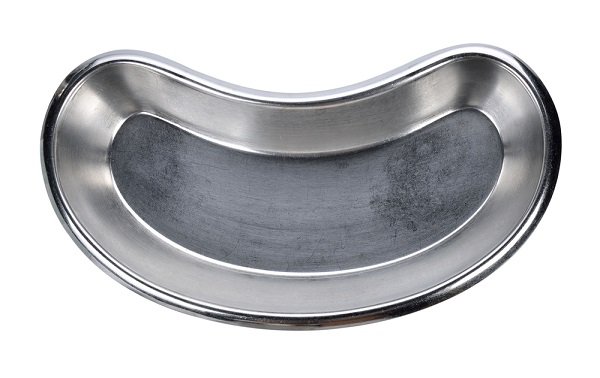
Stainless Steel vs. Plastic Kidney Trays: Which One Should You Use?
When it comes to choosing the right tools for medical procedures, every detail matters. From precision instruments to basic equipment like kidney trays, each item plays a vital role in ensuring hygiene, safety, and efficiency. Though often considered a simple accessory, the kidney tray—or emesis basin—is a fundamental piece of medical gear used in hospitals, clinics, dental practices, and even home care settings. But when selecting a kidney tray, the question often arises: should you opt for stainless steel or plastic?
In this blog, we explore the differences between stainless steel and plastic kidney trays, outlining their advantages, limitations, and use cases. Whether you’re managing a healthcare facility or supplying medical equipment, understanding these distinctions can help you make the best choice for your needs.
What is a Kidney Tray?
A kidney tray is a shallow, kidney-shaped container commonly used in medical environments to collect bodily fluids, hold surgical instruments, and assist in administering medications. Its ergonomic shape allows it to fit comfortably against the body, making it ideal for patients who are nauseous, bleeding, or undergoing procedures.
Kidney trays are designed for versatility. They are used during dressing changes, minor surgical procedures, dental treatments, and patient transport. The material used to manufacture these trays significantly impacts their durability, hygiene level, and cost-effectiveness.
Stainless Steel Kidney Trays
Durability and Reusability
Stainless steel kidney trays are known for their long-lasting durability. They are resistant to corrosion, dents, and breakage, making them ideal for repeated use. In high-traffic environments like hospitals and emergency rooms, this resilience is a significant advantage.
Sterilization Compatibility
Stainless steel trays are fully compatible with autoclave sterilization, making them ideal for maintaining the high standards of hygiene required in clinical settings. They can be subjected to high temperatures without warping or degrading, which is essential for infection control.
Eco-Friendly Option
Being reusable, stainless steel trays generate less medical waste compared to disposable plastic trays. Over time, they reduce the volume of single-use plastics entering landfills, making them a more environmentally responsible option.
Higher Initial Cost
The primary downside of stainless steel kidney trays is their initial cost. They are more expensive than plastic alternatives. However, their reusability often leads to cost savings in the long term.
Plastic Kidney Trays
Cost-Effective and Lightweight
Plastic kidney trays are typically less expensive upfront, making them a preferred option for one-time use or low-budget facilities. Their lightweight nature also makes them easy to handle, transport, and dispose of.
Disposable for Hygiene
Plastic trays are often designed for single use, minimizing the risk of cross-contamination between patients. This is particularly useful in high-turnover environments or during outbreaks of infectious diseases, where maintaining strict infection control is critical.
Variety of Sizes and Colors
Plastic trays are available in a wide range of sizes and colors, which can be helpful in organizing tools by procedure type or patient use. Color coding can assist in quickly identifying sterile versus non-sterile equipment.
Less Durable and Environmentally Harmful
Unlike stainless steel trays, plastic trays are prone to cracking or warping under heat, and they cannot be sterilized in an autoclave. They contribute significantly to medical waste and are often not biodegradable, raising environmental concerns.
Use Cases: When to Choose Which
Choose Stainless Steel Kidney Trays When:
- You operate in a high-volume medical facility requiring reusable, sterilizable tools.
- Infection control protocols demand equipment that can withstand repeated sterilization.
- Sustainability and long-term cost-efficiency are a priority.
- Procedures involve sharp or heavy instruments that could damage plastic trays.
Choose Plastic Kidney Trays When:
- You need cost-effective, single-use solutions.
- The risk of cross-contamination is high (e.g., in emergency or quarantine scenarios).
- The procedures are minor or involve minimal contact with bodily fluids.
- Your facility lacks autoclaving equipment for sterilization.
Cost vs. Value: A Closer Look
While plastic trays offer immediate savings, they can be more expensive over time due to the need for constant replacement. Stainless steel trays, though costlier upfront, provide long-term value through durability and reusability. Evaluating the total cost of ownership, including cleaning, sterilization, and replacement frequency, is crucial when making your decision.
Healthcare facilities must also factor in labor and waste disposal costs. Disposables may appear more convenient, but managing the waste adds operational burdens. In contrast, stainless steel trays, especially when sourced from trusted manufacturers like Organix Building System, offer consistent performance with minimal waste.
Environmental Impact
The global push toward sustainable healthcare practices is prompting more hospitals and clinics to reconsider their reliance on single-use plastic items. Plastic kidney trays contribute to the growing issue of medical waste, which poses environmental and logistical challenges for waste management systems.
By switching to reusable options like stainless steel, facilities not only reduce their environmental footprint but also align with green healthcare initiatives. This shift can also be a positive message for patients who value sustainability.
Final Verdict
There’s no one-size-fits-all answer when it comes to choosing between stainless steel and plastic kidney trays. The decision should depend on the nature of your medical operations, budget constraints, and commitment to hygiene and sustainability.
Stainless steel kidney trays are ideal for institutions focused on long-term value, hygiene, and eco-conscious practices. They are a solid investment for hospitals, surgical centers, and dental clinics. Plastic kidney trays, on the other hand, serve best in scenarios that prioritize disposability, speed, and cost-efficiency.
Understanding your facility’s specific needs and workflow will ultimately guide you to the right choice. Both materials have their place in modern healthcare—what matters most is using them wisely.
Need help choosing the right medical equipment for your facility? Whether you need durable stainless steel trays or cost-effective plastic alternatives, making informed decisions today will ensure safer, more efficient care tomorrow.
Leave a Comment
© Copyright © 2024 gwsmed.com | GWS Surgicals LLP. All rights reserved.
| |




Comment (0)
No Comments Yet. Be the first one.